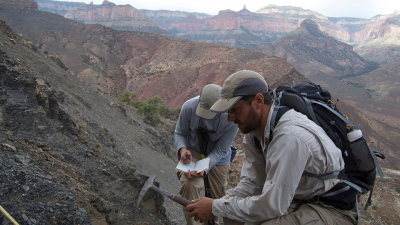Page path:
- Home
- Discover
- Archive News
- News 2019
- Snowball Earth
How predatory plankton created modern ecosystems after ‘Snowball Earth’
Original publication:
Lennart M. van Maldegem, Pierre Sansjofre, Johan W.H. Weijers, Klaus Wolkenstein, Paul K. Strother, Lars Wörmer, Jens Hefter, Benjamin J. Nettersheim, Yosuke Hoshino, Stefan Schouten, Jaap S. Sinninghe Damsté, Nilamoni Nath, Christian Griesinger, Nikolay B. Kuznetsov, Marcel Elie, Marcus Elvert, Erik Tegelaar, Gerd Gleixner & Christian Hallmann (2019): Bisnorgammacerane as a novel biological marker tracing ecosystem change after Snowball Earth. Nature Communications 10:476, DOI: 10.1038/s41467-019-08306-x
Contact:
Dr. Christian Hallmann
Organic paleobiochemistry
Phone: 0049 421 218-65820
Email: [Bitte aktivieren Sie Javascript]




